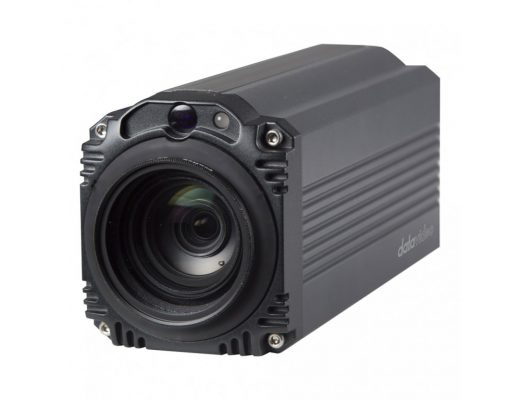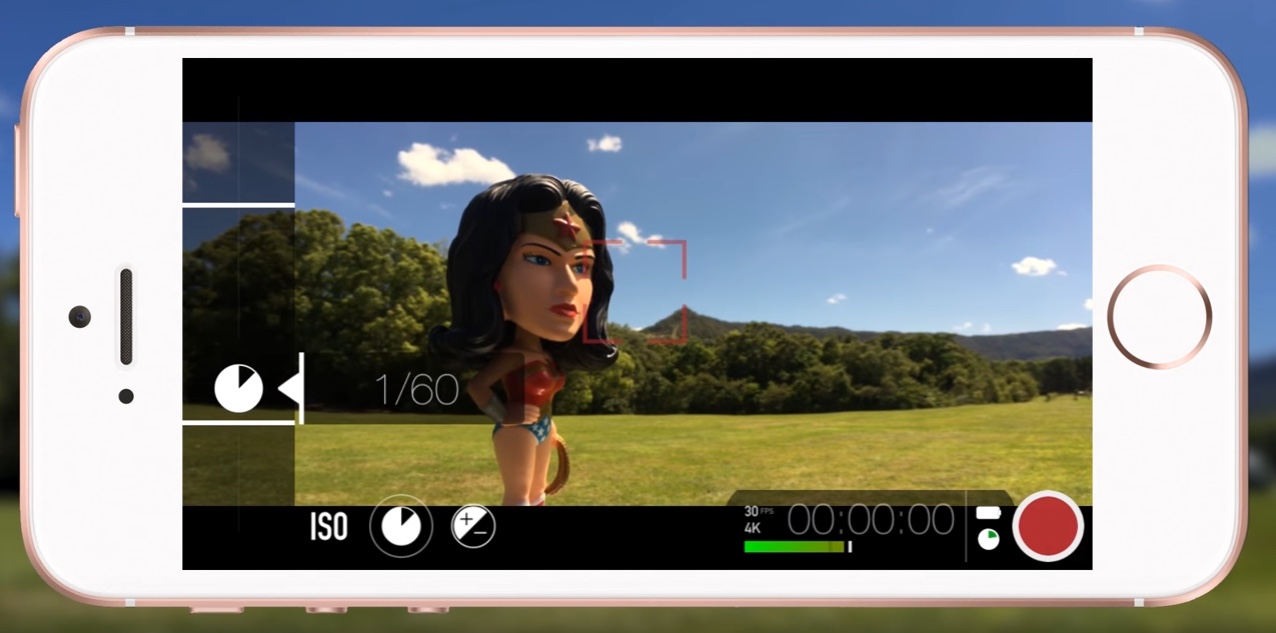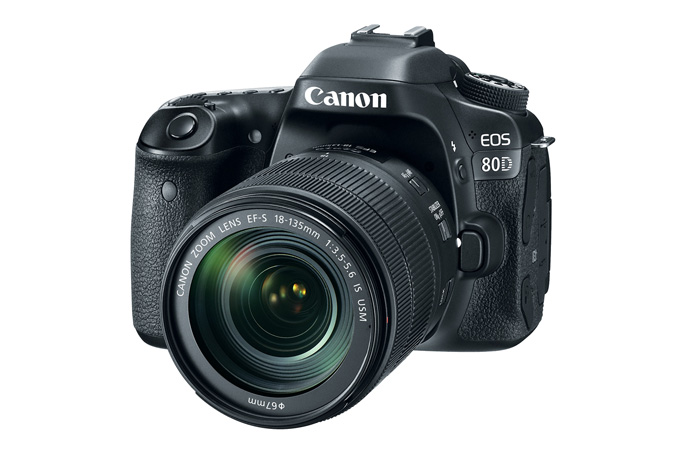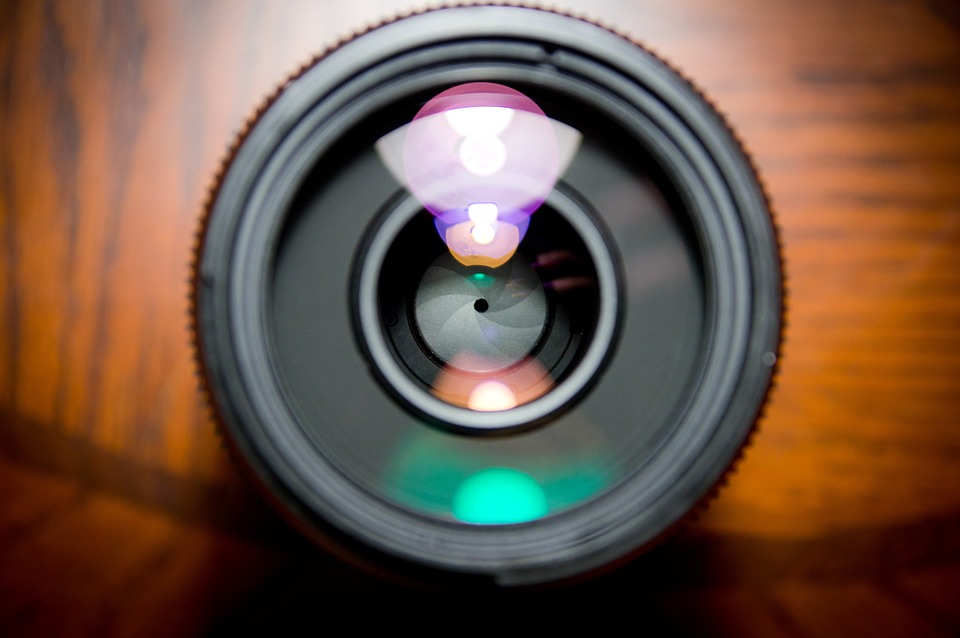
TL/DR:
-
Both shutter speed and shutter angle refer to how long a sensor is exposed to light.
-
In the cinema world, shutter angle is often used. In the photography world, it’s shutter speed, even with mirrorless cameras with video offerings.
-
Often filmmakers use the 180 degree shutter rule to achieve a natural and cinematic look.
-
If you are using multiple frame rates and want the same video look across them, using shutter angle can help avoid “math on the fly.”
-
Pac-Man is awesome.
It happened during 3rd Period.
There I was, explaining the basics of video and shutter speed, excited to blow students’ minds with calculations of fractions and the physics of light. After I posted a simple multiplication problem, inquiring about the correct shutter speed with 24 fps after explaining the fraction set up… everyone groaned.
“Math? In film class?” they exclaimed.
“I didn’t sign up for this,” joked one student.
For the most part, shutter speeds aren’t usually combined with groans these days. We’ve come a long way from where we were 100 years ago, when photographer Ansel Adams shared that his “means of regulating exposure times was to remove and replace the lens cap” (Adams, 79).
But why do we have both shutter speed and shutter angle? Can we use them interchangeably? And how can we think about the math, yes math, behind this?
The good news: while the terms are different, they are the same thing.
“Just two different ways to describe the same thing,” shared Paul Hawkhurst, Senior Professional Market Specialist at Canon. “Shutter Speed is useful for broadcast video and still people. Shutter Angle is useful for people who have motion picture film experience,” Hawkhurst continued in his email with ProVideo Coalition.
Not all cameras offer both speed and angle as shutter options. For example, the Canon EOS R only has shutter speed. Below is how the EOS R manual describes the shutter speed display:

But the Canon EOS C70, a cinema camera, has options for both shutter speed and shutter angle, as the C70 manual shares on page 62:
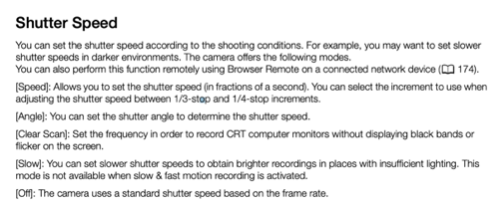
“Having shutter angle as an option is one of the key differentials between our mirrorless/DSLR line of cameras and our Cinema EOS cameras. It’s really mostly the top of the line or Cinema orientated cameras that offer Shutter Angle as a shutter option,” Hawkhurst explained.
The same divide goes for Sony. The Sony A7 IV for example, only has shutter speed as an option while the Sony FX6, a cinema camera, offers both speed and angle as shutter control options, as seen on pg 14 of the Sony Fx6 manual:

“People who have learned Shutter Speed through broadcast video, still photography, or DSLR Video would be more used to Shutter Speed. People with legit motion picture film camera experience will know Shutter Angle. Doesn’t matter what you choose as long as you understand what you’re choosing.” Paul Hawkhurst further broke down.
Shutter angle as a term stems from the days of actual rotary shutters used with film. As RED 101 shares, “this term is a conceptual relic of rotary shutters, where a disc with an angled opening would spin and let in light once per revolution to expose each frame” (https://www.red.com/red-101/shutter-angle-tutorial). Imagine a sort of Pac-Man mouth spinning around on a pencil, eating dots and other goodies with every turn. With a 180 degree angle “mouth” we would be at a half circle because the mouth is open to 180 degrees.
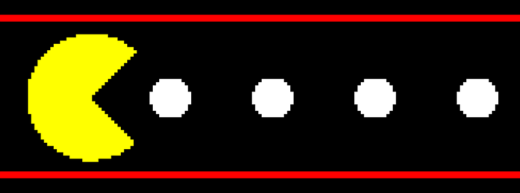
As Wipster explains, even though we still use the term in the cinematic world, we’re no longer actually manipulating the angle of that Pac-Man mouth because we’re not really using rotary shutters (https://www.wipster.io/blog/debunking-the-180-degree-shutter-rule#:~:text=But%20the%20180%2Ddegree%20shutter,actually%20looks%20very%20non%2Dcinematic).
We are often taught to use shutter speeds that are two x the frame rate (including my own students, still groaning at multiplication in film class). But why? This, as shared by Polar Pro, is to create both cinematic look and “to mimic motion the same way the human eye experiences it in real life.” (https://www.polarprofilters.com/blogs/polarpro/how-shutter-speed-affects-video).
To achieve this cinematic look with shutter angle, videographers and filmmakers follow the 180 Degree Shutter Rule. “180° is the setting for always achieving the most naturalistic motion in the context of whatever frame rate you’re using. [For example] when you’re using Shutter Speed and shooting at 24 fps, the most naturalistic motion is achieved by using 1/48 sec exposure time,” Paul Hawkhurst explained.
When a videographer changes frame rates often, say for example, going back and forth between 23.98 fps and 60 fps during an event to capture footage they can slow down in post, keeping your shutter angle at 180 degrees allows you to always have the “cinematic look” no matter the frame rate you use. You can set it and forget it if you always want the look of the 180 degree angle.
A fun research project for shutter angles and speeds is to dive into the BTS monitor views from film and tv productions to investigate which shutter angle setting they are using. Often, we see 180 degrees displayed on the monitor. But other shutter angles are also used to achieve a different look. With a 90 degree shutter and 23.98 fps, like we see with Game of Thrones, the theoretical “spinning Pac-Man” would have a smaller angle of its mouth open when compared to 180 degrees. This would be a faster shutter speed. We would have less light and less motion blur, and maybe, as explained with the 180 degree rule, a less “naturalistic look.” Sounds perfect for those creepy White Walkers. Get those White Walkers, Pac-Man!
RED also offers a handy exposure conversion table between angle and speed through their Image/LUT Menu when using 23.98 fps to help bring these ideas to light (pun intended). As you well know, the number in the shutter speed display on your camera refers to the number on the bottom of the fraction. For example, setting a shutter at 47.95 actually means 1/47.95. This would be a larger fraction then a shutter at, say, 95.90, which would mean 1/95.90. Smaller fractions = faster shutter speed = decrease of exposure and less motion blur. Remember our 90 degree angled Pac-Man with Game of Thrones? That’s equivalent, per above, to the 1/95.90 shutter speed fraction with 23.98 fps. Math!
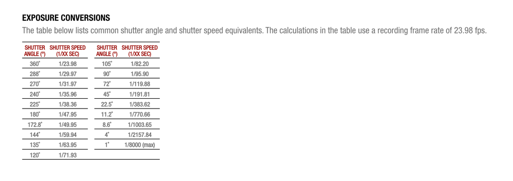
Even more math, and a direct way to calculate and convert between shutter speed and shutter angle can be found in Kendal Miller’s original ProVideo Coalition post at https://www.provideocoalition.com/shutter-speed-vs-shutter-angle/
RED also provides the following summary in the manual to help us out: “Decreasing shutter speed [author note – i.e. larger fractions and larger shutter angles] increases the amount of time that light hits the sensor, which increases exposure and motion blur of moving objects. Increasing shutter speed [author note – i.e. smaller fractions and smaller shutter angles] decreases the amount of time that light hits the sensor, which decreases exposure and motion blur of moving objects.”
So, should you use shutter speed or angle? Depends on the camera you have and whether both are offered, and, if you switch between frame rates during your filming.
And with that, class dismissed!
Works cited:
Adams, Ansel. The Camera. Trustees of the Ansel Adams Publishing Rights Trust, 1980.
Polar Pro: https://www.polarprofilters.com/blogs/polarpro/how-shutter-speed-affects-video
Red 101: https://www.red.com/red-101/shutter-angle-tutorial
RED Image/Lut Menu Shutter https://docs.red.com/955-0196_v1.6/Content/4_Menus/Image_LUT/Shutter.htm

Filmtools
Filmmakers go-to destination for pre-production, production & post production equipment!
Shop Now









